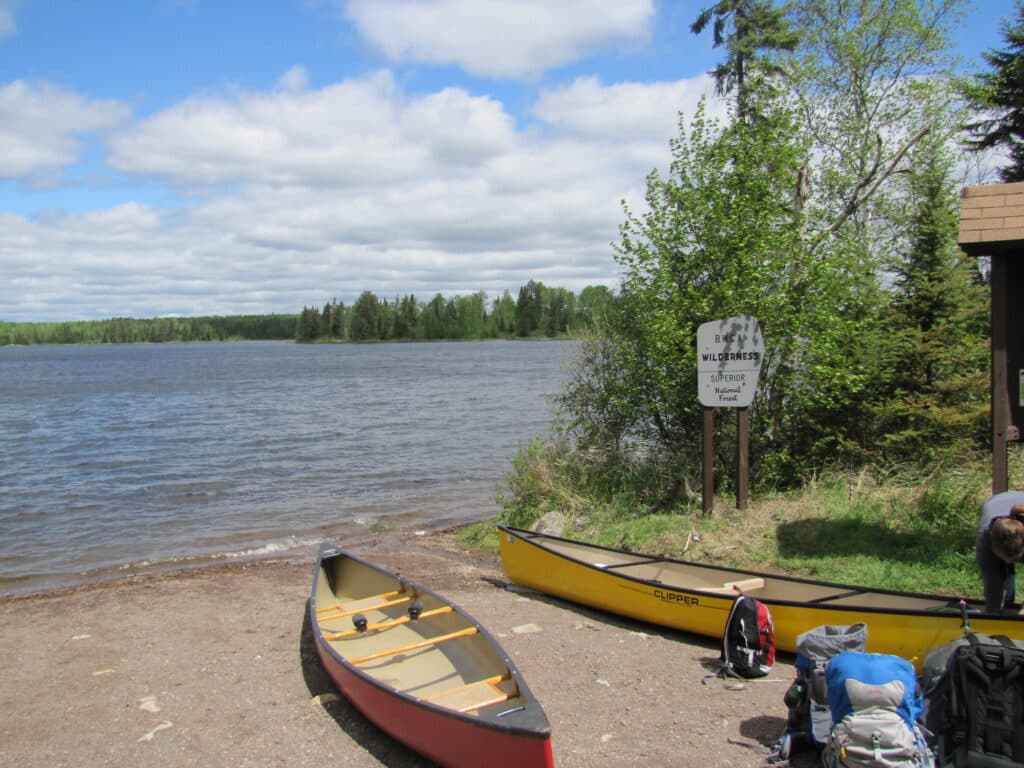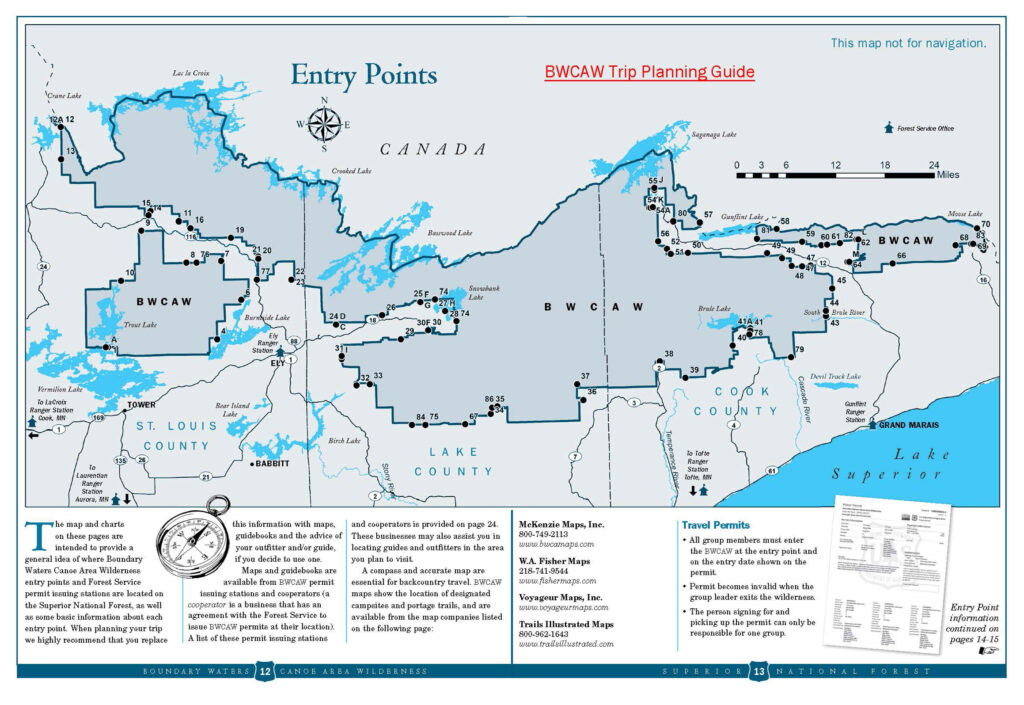
Permits to enter the Boundary Waters Canoe Area Wilderness between May 1 and Sept. 30 this year will go on sale next Wednesday, January 25 at 9 a.m. CST. Permits are required all year, but overnight trips are limited by a daily quota for each entry point during the five months of the typical open water season.
Quotas are intended to protect the wilderness and provide a backcountry experience for visitors. Last year, the Forest Service reduced quotas at about a third of the BWCAW’s entry points, seeking to prevent crowding and other problems.
The reduction, plus an increase in visitation that started in 2020, has made it more important than ever for visitors to reserve a permit well in advance of their trip. Reservations can be made on Recreation.gov. Many outfitters will also make reservations on behalf of clients using their services.
There are approximately 80 overnight paddle entry points for the wilderness. The protected area includes 1,200 miles of canoe routes, 12 hiking trails, and more than 2,000 campsites.

Planning is paramount
The Forest Service suggests people planning to reserve a permit have three options for date and entry point before trying to get a permit. The agency also warned that “stockpiling” permits, in which people reserve multiple permits for the same day, is illegal and will result in the Forest Service automatically cancelling all but one of the permits.
Permits must be picked up at a Forest Service ranger station or a cooperating outfitter no more than one day before a trip. Visitors must enter at the location and date on their permit. Reservations require visitors to pick an issue stations where they will pick up the permit, which are scattered around the million-acre wilderness. Once an issuing station has been selected, changes are not allowed. BWCAW permits are also not refundable.
Group sizes are also limited by wilderness regulation to a maximum of nine people and four watercraft. Visitors are also required to learn and practice Leave No Trace principles. Numerous other regulations for the wilderness are explained in the BWCAW Visitors Guide (PDF).
The Forest Service also encourages people to consider non-wilderness backcountry campsites on the Superior National Forest if they are not ready for the challenges of wilderness or are having trouble acquiring a permit. There are more than 250 backcountry sites available, as well as several rustic campgrounds.

